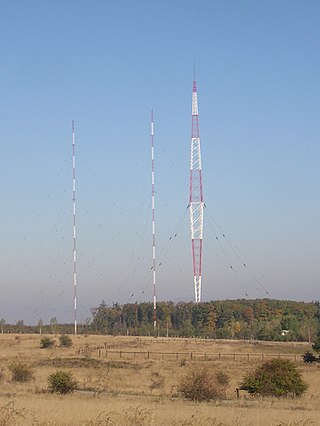Related Research Articles

Telecommunications in Bulgaria include radio, television, fixed and mobile telephones, and the Internet.
Telecommunications in Chad include radio, television, fixed and mobile telephones, and the Internet.
Since being liberalized in 1991, the Colombian telecommunications sector has added new services, expanded coverage, improved efficiency, and lowered costs. The sector has had the second largest investment in infrastructure since 1997. However, the economic downturn between 1999 and 2002 adversely affected telecommunications. During this period, Colombia's telecommunications industry lost US$2 billion despite a profit of US$1 billion in local service. In June 2003, the government liquidated the state-owned and heavily indebted National Telecommunications Company and replaced it with Colombia Telecomunicaciones. The measure enabled the industry to expand rapidly, and in 2004 it constituted 2.8 percent of gross domestic product (GDP). Telefónica of Spain acquired 50 percent plus one share of the company in 2006.

Like most countries and territories in Oceania, telecommunications in the Cook Islands is limited by its isolation and low population, with only one major television broadcasting station and six radio stations. However, most residents have a main line or mobile phone. Its telecommunications are mainly provided by Telecom Cook Islands, who is currently working with O3b Networks, Ltd. for faster Internet connection.
Telecommunications in Fiji include radio, television, fixed and mobile telephones, and the Internet.
Telecommunications in Jamaica include the fixed and mobile telephone networks, radio, television, and the Internet.
Telecommunications in Kuwait provides information about the telephone, Internet, radio, and television infrastructure in Kuwait.

The Marshall Islands is an island country in Oceania.
The People's Republic of China possesses a diversified communications system that links all parts of the country by Internet, telephone, telegraph, radio, and television. The country is served by an extensive system of automatic telephone exchanges connected by modern networks of fiber-optic cable, coaxial cable, microwave radio relay, and a domestic satellite system; cellular telephone service is widely available, expanding rapidly, and includes roaming service to foreign countries. Fiber to the x infrastructure has been expanded rapidly in recent years.
Telecommunications in Rwanda include radio, television, fixed and mobile telephones, and the Internet.
Telecommunications in Saudi Arabia have evolved early in the Kingdom since the establishment the Directorate of Post, Telephone and Telegraph (PTT) in 1926.
Communications in the Solomon Islands.
Telecommunications in Tonga include radio, television, telephones, and the Internet.
Telecommunications in Tuvalu cover Tuvalu's 6 atolls and 3 reef islands. The islands of Tuvalu rely on satellite dishes for communication and internet access.
Communications in the United States include extensive industries and distribution networks in print and telecommunication. The primary telecom regulator of communications in the United States is the Federal Communications Commission.
Communications in the United States Virgin Islands
Telecommunications in Iceland is a diversified market.
Communications in Barbados refers to the telephony, internet, postal, radio, and television systems of Barbados. Barbados has long been an informational and communications centre in the Caribbean region. Electricity coverage throughout Barbados is good and reliable. Usage is high and provided by a service monopoly, Barbados Light & Power Company Ltd..
This is a list of Communications in Saint Kitts and Nevis.
Communication services in American Samoa are diversified among telephony, radio broadcasting, television, and Internet services.
References
- ↑ "Cable project in final phase". samoaobserver.ws. March 31, 2009.
- ↑ "iPasifika Samoa".
